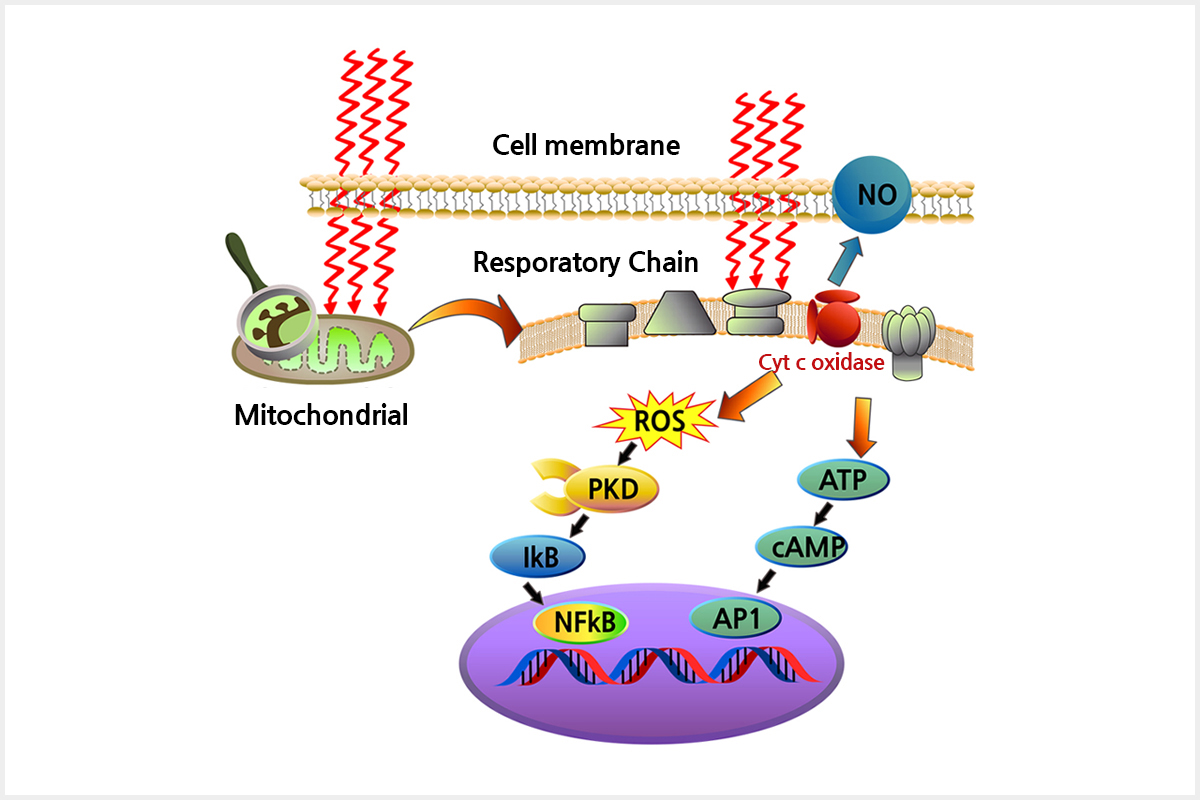The Ultimate Guide To Photobiomodulation
Wiki Article
The smart Trick of Photobiomodulation That Nobody is Talking About
Table of ContentsOur Photobiomodulation StatementsThe Single Strategy To Use For Photobiomodulation6 Simple Techniques For PhotobiomodulationThe Of Photobiomodulation
Laser treatment is a clinical therapy that utilizes focused light to promote a process called. During PBM, photons go into the tissue and communicate with the cytochrome c complex within mitochondria. This interaction triggers a biological cascade of occasions that results in an increase in mobile metabolism, which can in addition to speed up the healing procedure.There is consensus that the application of a restorative dosage of light to damaged or dysfunctional cells results in a cellular feedback moderated by mitochondrial devices. Photobiomodulation. Research studies have revealed that these adjustments can influence pain and inflammation, as well as, tissue repair service
Modifications in ATP, responsive oxygen types and nitric oxide follow light absorption by Cc, O. These impacts are redox state and dose dependent. In hypoxic or otherwise worried cells it has actually been shown sometimes that following, nitric oxide is launched, ATP is enhanced and oxidative stress is minimized [27-31]

Our Photobiomodulation PDFs
PBM devices have been gotten rid of for marketing by FDA via the Premarket Notification/510( k) procedure as adjunctive gadgets for the short-lived relief of discomfort. These clearances were based upon the discussion of professional data to support such insurance claims (Photobiomodulation). In this treatment, a light is placed near or in contact with the skin, permitting the light energy (photons) to pass through cells where it engages with chromophores found in cells resulting in photophysical and photochemical changes that bring about modifications at the molecular, cellular and cells degrees of the bodySurprisingly, current study shows that light can boost efficiency in regular tissues and cells. The potential applications of PBMT are various and are being discovered experimentally at the basic scientific research, pre-clinical and clinical level. The present scientific usages are for the alleviation of pain and inflammation and the therapy of sports injuries.

The therapy criteria and number of sessions needed for PBMT are reliant upon area and reason. PBMT typically requires even more than one treatment for ideal discomfort alleviation.
All about Photobiomodulation
Therapy criteria for PBMT were originally developed utilizing cells in vitro and in small animal models. These treatment criteria usually had a low irradiance and fluence and worked well for cutaneous applications. Nevertheless when clinicians started to utilize PBMT to treat frameworks that lay much deeper in the body, they utilized these parameters with negative outcomes.
We now recognize that these unfavorable researches were due to wrong device and treatment parameters for transcutaneous therapy of deeper frameworks. Current advancements in laser treatment devices and even more study into the appropriate does have considerably improved the results of PBMT. For dealing with deep cells, the wavelength of light made use of figures out the depth of penetration right into a tissue.
It is vital that a medical professional utilizes the suitable wavelength of light and criteria to deal with a condition. One wavelength and one collection of therapy criteria will not work for all conditions. Adverse adverse effects have not been reported from using PBMT (Photobiomodulation). Upgraded discover this June 27, 2016Juanita j
Light therapy is a non-invasive treatment that functions by enhancing the ability of the cell to develop energy (ATP) to heal the area being treated. Consequently, it can reduce swelling, swelling, and discomfort in the area. Research in this area is increasing, with more comprehensive research study papers linked below for those who would love to find out more.
Some Known Details About Photobiomodulation
In the first experiment, Dr. Endre Mester, made use of shaved rats and observing how the laser impacted their capacity to expand hair contrasted to the group that was not getting LLLT. He discovered that the Extra resources group of computer mice obtaining LLLT were able to expand their hair back more quickly than the group of mice that really did not receive LLLT (Hoon C, et al; 2012).This therapy is described this means to set apart the difference in between the lasers some professions use to cut (eg. in surgical treatments, or oral procedures). Low-level light treatment is painless, non-invasive treatment. It is made use of to lower swelling, swelling, and chronic joint disorders, decrease discomfort and accelerate wound recovery of this content nerves and tissues (Hoon C, et al; 2012).
LLLT has a biphasic reaction, indicating that lower dosages are usually seen to be much more valuable than greater doses. That being said, dosages higher or reduced than the ideal dose doesn't affect (Hoon C, et alia; 2012). Consequently, it can be tough to have research studies on LLLT with numerous specifications.
Some firms incorporated both (LED and laser) to give an extra all-round therapy since lasers can penetrate deeper than LED and infrared light (Norman Doidge, The Brain's Means of Healing, 2015). Throughout treatment, the location that is being treated is subjected to LED light from a Bio, Flex Laser, which goes to 660 nm wavelength, followed by infrared light at 830-840 nm wavelength.
Report this wiki page